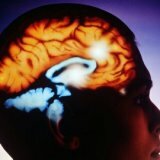Tick-borne encephalitis: causes, symptoms, treatment and prevention
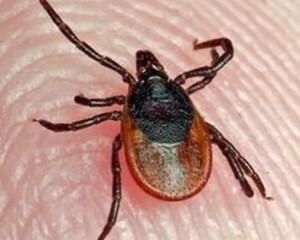 Tick-borne encephalitis is a viral disease that occurs extremely hard and ends with paralysis or fatalities.This disease affects the central nervous system and the brain, an inflammatory process develops in the brain substance - this can lead to disruption of the work of any of its departments.
Tick-borne encephalitis is a viral disease that occurs extremely hard and ends with paralysis or fatalities.This disease affects the central nervous system and the brain, an inflammatory process develops in the brain substance - this can lead to disruption of the work of any of its departments.
Reasons for
Recommended: The most commonly diagnosed viral disease in the spring and autumn periods of the year.And this is due to the activity of ticks - it is these insects, the inhabitants of forests and fields, that carry the disease.Note: in different regions of Russia the incidence of tick-borne encephalitis is different.  Tick encephalitis refers to the primary type of disease - the effect of the virus is directly on the substance of the brain or the spinal cord, no concomitant pathologies of infectious, inflammatory etiology are not diagnosed.
Tick encephalitis refers to the primary type of disease - the effect of the virus is directly on the substance of the brain or the spinal cord, no concomitant pathologies of infectious, inflammatory etiology are not diagnosed.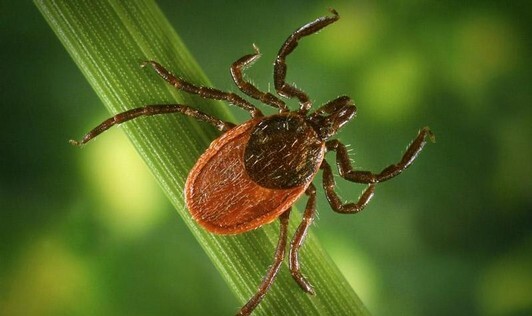
Symptoms of tick encephalitis
When infected with tick-borne encephalitis virus, the symptoms of the pathology manifest themselves almost immediately - if, for example, the bite was done in the morning, then by the evening the patient will show signs of the strongest intoxication of the body:
- nausea and severe vomiting -It occurs irrespective of how long ago and how many people took food;
- sharp rise in temperature to critical levels - no antipyretic drugs do not bring relief;
- headaches are intense, accompanied by pulsation and a feeling of squeezing the skull;
- skin of face and neck blushes.
After a short time, other signs of encephalitis develop:
- lowering of arterial pressure;
- signs of inflammation at the site of a bite( swelling, redness, pain during palpation);
- cardiac rhythm disturbance - arrhythmia, bradycardia, is expressed in dyspnea and chest pains;
- rigidity of the occipital muscles - they are extremely strained, the patient can not keep his head straight, it is thrown back;
- photophobia.
Important: if tick-borne encephalitis was detected at the very beginning of its development, then the forecast doctors give always favorable.Otherwise, a person either dies or becomes disabled. Symptomatology may vary depending on the form in which the disease under consideration develops.The initial period is characterized by the presence of neurological disorders( dizziness, disturbance of the psycho-emotional background, etc.), can result in complete recovery without complications and consequences or the death of the patient.The next period can be accompanied by epileptic attacks, paresis and paralysis, numbness of the skin of the face and neck, increase in body temperature to 39-40 degrees. The doctor observes the degree of difference in neurological disorders and determines the type of tick-borne encephalitis:
- Febrile - the patient shows signs of general intoxication of the body, recovery occurs relatively quickly.
- Meningeal - proceeds with a fever and all signs of a meningococcal infection, even in a cerebrospinal fluid there is a meningococcal element and a protein.The patient often fixes mental disorders of reversible type - delirium, hallucinations, excessive excitement.The disease in this form has a favorable prognosis, but chronic paresis of facial muscles can develop.
- Meningoencephalitic - differs in violation of the mimic picture( eyelids drop, corners of the eyes, face distorted), loss of sonority of voice, disturbance of the speech device.For the meningoencephalitic type of the disease under consideration, the wave current of hyperthermia is characteristic( increase in body temperature).The first wave lasts 2 weeks and is accompanied only by intoxication symptoms, the second comes 2-3 days after the end of the first, accompanied by symptoms of meningitis and lasts 3 weeks.The forecast is favorable.
- Poliomyelitis - within the first 2 days patients complain only of fatigue and muscle pain.Then, impaired motor functions develop, regular muscle twitching, paresis in the shoulder and neck regions of the spine, and dangling of the head on the chest.This kind of tick-borne encephalitis has a variety of predictions, because 2-3 weeks after recovery the patient becomes atrophy of the affected muscles - it can be reversible( the patient completely recovers) and irreversible( disability threatens).
- Polyradiculoneuritis - viral infection affects the roots of peripheral and frontal nerves, limbs become insensitive to external stimuli.
For more information on symptoms of tick-borne encephalitis and the course of the disease, see the video review:
Diagnosis of tick-borne encephalitis
Preliminary diagnosis is made by the doctor at a primary examination of the patient - complaints of headache, fever, convulsions in muscle tissues,Patient in the forest / park area a few days before the onset of symptoms confirm the suspicion of the onset of the disease in question. But no expert can diagnose without additional examinations:
- computed tomography of the brain - allows the doctor to see the inflammatory process in the brain, to assess its prevalence and severity;
- fence for laboratory testing of cerebrospinal fluid( cerebrospinal fluid) - reveals the presence of protein in it, high content of leukocytes;
- biochemical blood test.
Treatment methods
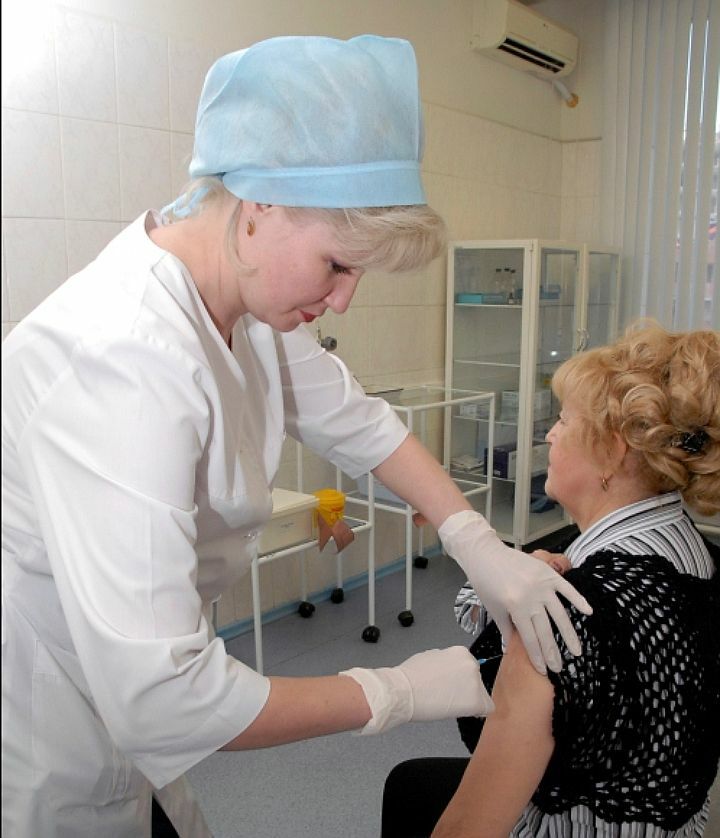 If tick-borne encephalitis has been identified at an early stage of development, then antiancephalitic immunoglobulin therapy will be effective.For successful recovery, the patient is administered inactivated vaccine and ribonucleic acid.Please note: similar vaccination can be carried out and for preventive purposes - it helps to avoid infection with the considered viral disease and reduce intoxication manifestations of the inflammatory process.It is recommended to be vaccinated in the spring and autumn periods - the peak of patients' appeals for the development of typical symptoms of tick-borne encephalitis.
If tick-borne encephalitis has been identified at an early stage of development, then antiancephalitic immunoglobulin therapy will be effective.For successful recovery, the patient is administered inactivated vaccine and ribonucleic acid.Please note: similar vaccination can be carried out and for preventive purposes - it helps to avoid infection with the considered viral disease and reduce intoxication manifestations of the inflammatory process.It is recommended to be vaccinated in the spring and autumn periods - the peak of patients' appeals for the development of typical symptoms of tick-borne encephalitis.
General principles of therapeutic measures
A patient with diagnosed tick-borne encephalitis must comply with strict bed rest during the acute period of the disease course - this greatly facilitates the patient's condition. In addition, doctors can prescribe:
- antibacterial drugs( antibiotics) - especially their appointment in the development of the meningeal form of the disease in question;
- antiviral agents;
- vitamins B and C;
- immunostimulating agents.
It is important to carry out symptomatic therapy in a timely manner - for example, when the body temperature is elevated, antipyretic agents should be prescribed, if there is an intense pain syndrome, non-steroidal anti-inflammatory drugs or analgesics.Only after 3 weeks, and in case of complete stabilization of the patient's condition, an extract is possible.The rehabilitation period is very long - the patient should visit the therapist once a month and once a month - the neurologist.Mud therapy, sanatorium treatment are useful.
Traditional medicine
A tick, which has already dug into the skin and is absorbed by the blood of a person, is easy to detect( especially the female), but it is almost impossible to pull it out yourself.
All the folk methods of getting rid of the stinging tick( dripping vegetable oil, wrapping it with a thread) are absolutely useless - the infection with tick-borne encephalitis occurs at the moment of biting the insects by human skin.
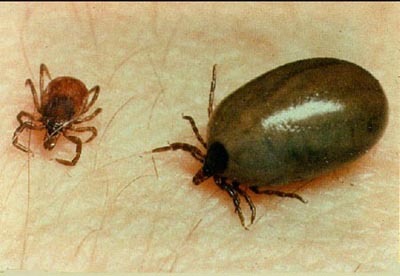 Important: folk methods of treatment of the disease in question are aimed at strengthening the body, getting rid of headaches, they are appropriate to use in the recovery phase.It is strictly forbidden to take any medical measures when developing symptoms of tick-borne encephalitis without consulting a doctor - this can lead to rapid development of the disease and death. For the fastest passage of the recovery period it is recommended to use the following tools from the category of traditional medicine:
Important: folk methods of treatment of the disease in question are aimed at strengthening the body, getting rid of headaches, they are appropriate to use in the recovery phase.It is strictly forbidden to take any medical measures when developing symptoms of tick-borne encephalitis without consulting a doctor - this can lead to rapid development of the disease and death. For the fastest passage of the recovery period it is recommended to use the following tools from the category of traditional medicine:
- Mint, lemon balm, periwinkle.These herbs can not be mixed in one decoction - they lose their healing properties.You need to separately prepare a decoction of mint / melissa / from periwinkle according to one recipe: 1 tablespoon of dry ingredient per glass of water, boil for 5 minutes, insist 15 minutes, drain.Scheme of application: for ½ cup decoction of mint in the morning, as much broth as a periwinkle for dinner and 1/3 cup of lemon balm for the night.Duration of admission is 2 weeks.
- Poplar black.Use the seeds of this plant( sold in pharmacies) in quantities of 1 teaspoon per glass of steep boiling water.The medicine is brewed as a regular tea, taken on a tablespoon before meals 3-5 times a day.Infusion of poplar seeds black perfectly removes attacks of nausea, relieves of a constant headache.
- Melissa officinalis.It is necessary to take 2-3 tablespoons of a dry component and to make in a thermos as tea( on 1 liter of boiled water).After a 30-minute infusion, the drug is ready for use - it should be drunk instead of regular tea to relieve spasms in the muscle tissue and get rid of dizziness.
- Periwinkle on alcohol.For 1 liter of medical alcohol you need to take 100 g periwinkle dry, mix everything and insist 20 days in a dark and warm place.Then take 10 drops in the morning and evening for 5 months.For a better perception of the drug( it does not differ refined taste), alcohol drops can be diluted in a small amount of water.Periwinkle on alcohol improves blood circulation, normalizes and stabilizes blood pressure, cleans vessels, improves the supply of brain oxygen.
Prevention of tick encephalitis
Very rarely ticks live in urban conditions, they usually feel comfortable in the forests, in fields and meadows, and in places moist and darkened.Most often, patients are treated with signs of tick-borne encephalitis after hikes, natural picnics. To avoid mite bites, you must follow simple rules for staying in nature:
- clothing should be long-sleeved and trousers;
- need to fill the pants in socks, and on the palm of your hand, it is advisable to put on gloves( even if they are very thin), in which the sleeves are refueled;
- on clothes it is necessary to put противоклещевые means - for example, paste ДЭТА-34 for many years is considered the most effective means of prevention / protection against tick bites;
- after returning home, you need to remove all clothes and immediately take a shower, then you need to carefully inspect your clothes "from the forest" and the body for the detection of ticks.
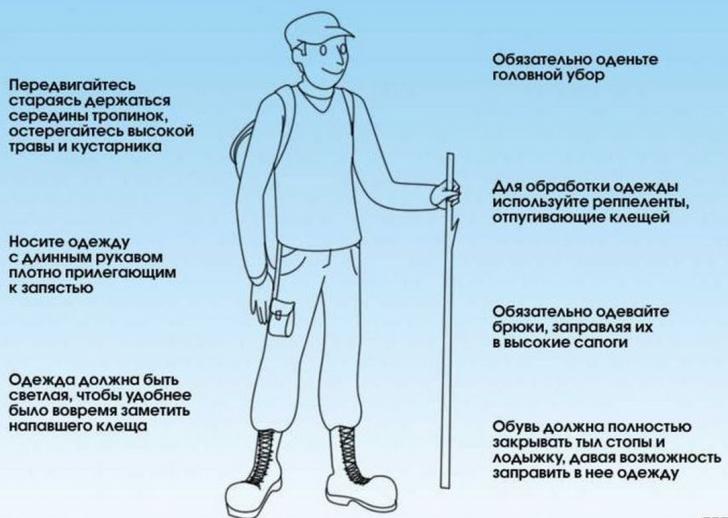 Important: If a tick has been found on the body, seek medical help immediately - they will remove the insect and perform an anti -encephalitic vaccination. To get more information about tick-borne encephalitis prevention and to find out what tick protection measures are most effective, review this video review:
Important: If a tick has been found on the body, seek medical help immediately - they will remove the insect and perform an anti -encephalitic vaccination. To get more information about tick-borne encephalitis prevention and to find out what tick protection measures are most effective, review this video review:
Tick-borne encephalitis is a very dangerous disease, which in 84% of cases leads to a fatal outcome.But in the case of timely treatment for help to doctors, this figure is reduced by 8-9 times, so carefully follow the clinical picture.If you recently returned from a hike or picnic, during the first 24 hours the first symptoms of developing tick-borne encephalitis may appear - this is an absolute reason for seeking professional help. Yana Tsygankova, medical reviewer, therapeutist of the highest qualification category.



